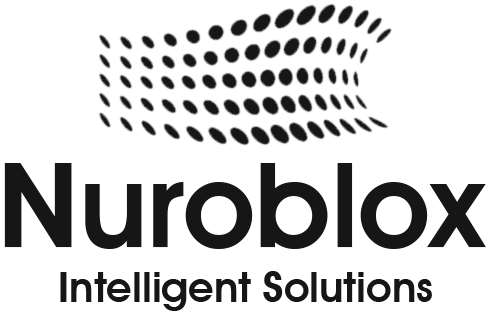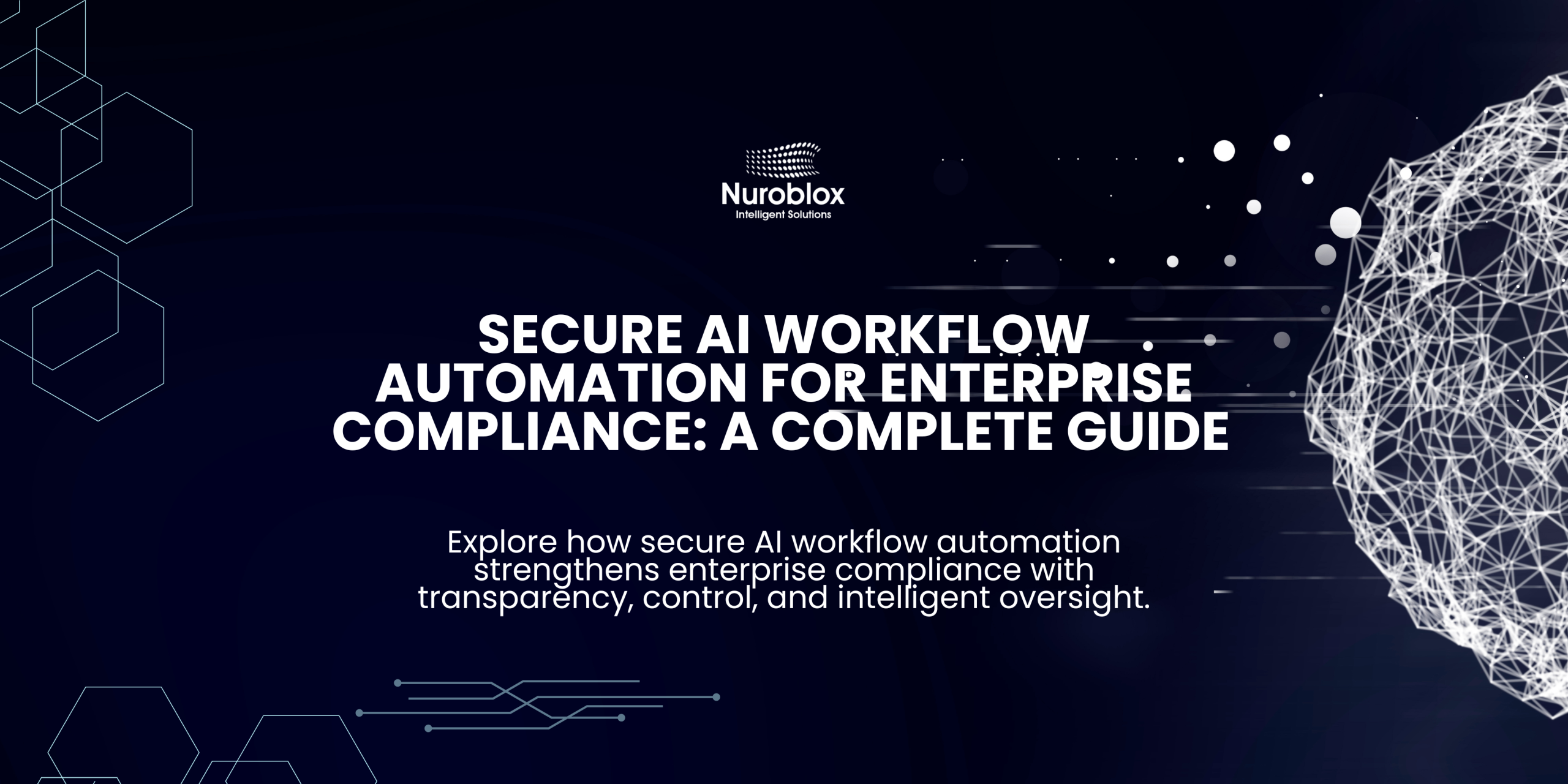Secure AI Workflow Automation for Enterprise Compliance: A Complete Guide
Modern enterprises face an unprecedented challenge – balancing the need for operational efficiency with increasingly stringent regulatory requirements. Secure AI workflow automation has emerged as the critical solution, enabling organizations to accelerate processes while maintaining compliance standards that regulators demand. In 2025, companies implementing secure AI workflow automation report 40-60% improvements in process efficiency while simultaneously reducing compliance risks by up to 35%. This comprehensive guide explores how enterprises can leverage intelligent automation to streamline workflows, maintain audit readiness, and achieve sustainable competitive advantage without compromising security or governance standards.
What is Secure AI Workflow Automation?
Secure AI workflow automation represents the convergence of artificial intelligence, robotic process automation and enterprise-grade security protocols designed specifically for regulated industries. Unlike traditional automation tools, this approach combines intelligent decision-making capabilities with built-in compliance controls, audit trails, and governance frameworks.
Secure AI workflow automation works by analyzing business processes, identifying optimization opportunities, and automating repetitive tasks while ensuring every action remains traceable, approved, and compliant with regulatory standards. The technology utilizes machine learning algorithms to continuously improve workflow decisions while maintaining transparent logging for audit purposes.
Organizations across banking, healthcare, insurance, and pharmaceuticals have successfully deployed secure AI automation to handle sensitive processes. For instance, financial institutions use this technology to automate loan approvals while maintaining Know Your Customer (KYC) compliance, while healthcare providers optimize appointment scheduling without violating Health Insurance Portability and Accountability Act (HIPAA) requirements.
Why Enterprise Compliance Demands Secure AI Automation
The Compliance Challenge in Modern Enterprises
Modern enterprises navigate a complex landscape of overlapping regulations – GDPR, SOC 2, HIPAA, PCI-DSS, ISO 27001, and industry-specific requirements. Manual compliance processes are not only resource-intensive but also prone to human error, a study found that 60% of compliance violations stem from procedural failures rather than system inadequacies.
Secure AI workflow automation directly addresses this vulnerability by embedding compliance rules into automated processes. Every action is logged automatically, decision criteria are transparent and auditable, and regulatory requirements are built into workflow logic rather than managed as afterthoughts.
Risk Reduction and Audit Readiness
When compliance operates through manual workflows or disconnected systems, regulators face significant gaps in auditability. Secure automation creates comprehensive digital trails showing exactly who authorized what, when decisions were made, and how they aligned with regulatory requirements. This transforms audits from stressful exercises into routine demonstrations of systematic compliance.
Organizations implementing compliant automation reduce audit preparation time by 50-70% while simultaneously improving audit results. The technology enables real-time compliance monitoring rather than quarterly or annual reviews, allowing issues to be addressed immediately.
Core Components of Secure AI Workflow Automation
Intelligent Process Orchestration
AI-powered workflow orchestration serves as the intelligent backbone, analyzing process variations and optimizing routing decisions. Unlike static rule-based systems, intelligent orchestration learns from historical data to make increasingly sophisticated decisions. This capability particularly benefits compliance departments where process variations often create audit vulnerabilities.
Enterprise Automation Security
Security is non-negotiable in regulated environments. Enterprise automation security requires multi-layered protection – encryption in transit and at rest, role-based access controls, token-based authentication, and isolated execution environments. The platform must prevent unauthorized process modifications while maintaining the flexibility enterprises need for legitimate updates.
Audit Trail and Governance
Complete, tamper-proof audit trails are essential for secure agentic automation. Every process step, decision point, and data access must be recorded with timestamps, user identifiers, and process parameters. Many enterprises require immutable logs to satisfy regulatory scrutiny, blockchain-based or append-only database solutions serve this purpose.
Compliance Rule Engine
Built-in compliance logic ensures that workflows automatically enforce regulatory requirements. Rather than relying on manual checkpoints, the system validates compliance at each decision point, preventing non-compliant actions from executing in the first place. This approach, sometimes called workflow optimization with compliance, achieves both efficiency and adherence.
Implementation Strategy – Best Practices for Enterprise Success
Phase 1 – Discovery and Assessment
Begin by mapping existing workflows to identify compliance touchpoints. Audit current process gaps, regulatory requirements, and technical constraints. This assessment phase typically requires 4-8 weeks and should involve compliance, operations, IT, and security teams.
Key activities include –
- Documenting all processes subject to regulatory requirements
- Identifying manual checkpoints and approval bottlenecks
- Assessing current security posture and gap areas
- Establishing baseline metrics for compliance and efficiency
Phase 2 – Pilot Implementation
Select 1-2 non-critical workflows for pilot implementation. This approach allows teams to develop expertise, test security protocols, and validate compliance effectiveness before enterprise-wide deployment. Ideal pilot processes should be moderately complex, have clear compliance requirements, and involve manageable user adoption challenges.
Pilot success criteria –
- Zero compliance violations during pilot period
- Successful completion of security audit
- Stakeholder satisfaction exceeding 80%
- Measured efficiency improvements of 25%+ versus baseline
Phase 3 – Security Hardening
Before expanding beyond pilot workflows, implement comprehensive security measures. This includes penetration testing, security scanning, encryption protocol validation, and access control verification. External security audits provide independent validation of protective measures.
Phase 4 – Enterprise Rollout
Systematic expansion to additional processes follows proven security protocols. Establish change management procedures ensuring each new automated process receives security review and compliance validation before going live. Continuous monitoring ensures sustained compliance as processes evolve.
Overcoming Common Implementation Challenges
Challenge 1 – Legacy System Integration
Most enterprises operate with legacy systems that weren’t designed for modern integration. Secure AI workflow automation platforms should offer pre-built connectors for common systems and API capabilities for custom integrations. Addressing integration challenges early prevents project delays and security gaps.
Solution approaches –
- Implement middleware platforms for legacy system connectivity
- Use API gateways to standardize integration patterns
- Build connectors progressively rather than attempting simultaneous integration
Challenge 2 – Change Management and Adoption
Even efficient automation faces adoption resistance when employees perceive job threats. Frame automation as complementary to human skills, removing tedious tasks while elevating strategic responsibilities. Comprehensive training and transparent communication prove critical for successful adoption.
Adoption strategies –
- Involve end-users in automation design from the beginning
- Provide comprehensive training with hands-on practice
- Establish feedback channels for continuous process improvement
- Celebrate early wins and share success stories
Challenge 3 – Balancing Speed with Security
Automation delivers value through speed, yet security reviews require time. Establish streamlined review processes that don’t bottleneck innovation. Pre-approved automation patterns accelerate deployment while maintaining security.
Challenge 4 – Regulatory Interpretation Uncertainty
Different regulatory bodies sometimes provide ambiguous guidance on specific automation scenarios. Maintain close collaboration with compliance experts and consider advisory relationships with regulatory consultants. Document compliance reasoning to support audit discussions.
Measuring ROI – Financial and Operational Benefits
Cost Reduction Impact
Organizations implementing secure AI workflow automation typically achieve 30-50% cost reductions in affected processes. Calculation includes labor savings, error reduction, and compliance efficiency gains. Many enterprises recoup implementation investment within 12-18 months.
Typical cost reductions –
- Labor reduction – 40-60% in automated process areas
- Error reduction – 50-80% fewer compliance violations
- Compliance staffing – 25-35% reduction in manual oversight
- System overhead – 15-25% lower infrastructure costs
Revenue Impact and Risk Mitigation
Beyond cost reduction, secure agentic automation enables revenue protection and growth opportunities. Faster processing improves customer experience, reduced errors prevent revenue leakage, and freed resources support strategic initiatives. Risk mitigation through compliance automation prevents costly penalties like regulatory violations average $250,000+ per occurrence.
Operational Metrics
Measure success through operational KPIs – process cycle time, error rates, compliance violation frequency, and audit findings. Secure automation typically improves these metrics by 35-60% within 6 months of deployment.
Advanced Features – Next-Generation Secure Automation
AI Audit Trails and Explainability
Modern secure automation platforms provide AI audit trails that explain how decisions were made. Rather than black-box automation, explainable AI shows the decision logic, which regulations required specific actions, and how the system weighted competing priorities. This transparency addresses a critical audit requirement.
Real-Time Compliance Monitoring
Continuous compliance monitoring detects violations instantly rather than waiting for audit cycles. Real-time dashboards show process compliance status, alert teams to potential issues, and enable immediate corrective action before regulatory exposure occurs.
Adaptive Workflow Optimization
Machine learning continuously optimizes workflows based on operational data. The system identifies bottlenecks, tests efficiency improvements, and automatically deploys proven optimizations. Workflow optimization with compliance ensures improvement recommendations never compromise regulatory adherence.
Multi-Tenant Governance
For organizations with multiple business units or geographies, multi-tenant governance ensures consistent compliance while allowing local flexibility. Centralized policy management prevents compliance gaps while permitting customization for regional requirements.
Industry Applications and Success Metrics
Financial Services
Banks implementing secure AI workflow automation for loan processing improved approval times from 5-7 days to 24-48 hours while maintaining KYC compliance. Fraud detection improved through consistent process execution, reducing losses by 30-40%.
Healthcare and Life Sciences
Healthcare organizations automated patient data processing and insurance verification while maintaining HIPAA compliance. Billing accuracy improved by 45%, claim denials decreased by 35%, and staff handled 60% more patient interactions through freed capacity.
Insurance
Insurance companies automated claims processing and fraud detection. Average claim processing time improved from 14 days to 3 days while maintaining SOC 2 compliance and improving fraud detection accuracy by 50%.
Manufacturing and Supply Chain
Manufacturers automated purchase order processing, invoice reconciliation, and supplier communication. Procurement costs decreased by 20-25%, payment accuracy improved to 99.5%+, and compliance with supplier agreements improved measurably.

Essential Security Capabilities
Evaluate platforms on encryption strength, multi-factor authentication, role-based access controls, and audit logging. Request security certifications including SOC 2 Type II, ISO 27001, and relevant industry certifications. Conduct independent security assessments before platform commitment.
Compliance Framework Integration
Verify that the platform includes compliance frameworks for your specific regulations. Pre-built templates for GDPR, HIPAA, PCI-DSS, and industry-specific requirements accelerate deployment. Assess update frequency, regulatory requirements evolve, and platforms should update compliance logic regularly.
Integration and Scalability
Evaluate API completeness, pre-built connectors for your existing systems, and scalability to your organizational size. Request load testing results demonstrating platform performance at your expected transaction volumes.
Vendor Stability and Support
Assess vendor financial stability, customer support quality, and roadmap alignment with your needs. Reference checks from similar-sized organizations in your industry provide realistic expectations. Ensure SLA commitments meet your operational requirements.
Future Outlook – Secure Automation in 2025 and Beyond
Secure AI workflow automation continues evolving rapidly. Emerging capabilities include autonomous agents that handle increasingly complex decisions, federated learning enabling secure collaboration without centralizing sensitive data, and quantum-resistant encryption protecting long-term security.
Regulatory bodies are increasingly recognizing and encouraging secure automation adoption. New regulations increasingly permit accelerated compliance through automated processes, viewing them as more reliable than manual alternatives. Organizations that master secure automation now will lead compliance capabilities for years ahead.
The convergence of AI capabilities, regulatory clarity, and technology maturity makes 2025 the optimal time for enterprise automation investment. Early adopters establish competitive advantages through operational efficiency while demonstrating superior compliance discipline.
Conclusion
Secure AI workflow automation for enterprise compliance represents the evolution of business automation from a cost-reduction tool to a strategic capability fundamental to modern enterprise operations. Organizations that implement intelligent, secure automation now position themselves as compliance leaders while achieving substantial operational benefits.
The path forward requires deliberate assessment of your current state, strategic platform selection, and disciplined implementation approach. Start with pilot programs, build expertise, then expand systematically. The combination of operational efficiency and compliance excellence delivers competitive advantage that compounds over years.
Ready to transform your compliance operations through secure AI workflow automation? Evaluate your current processes, assess regulatory requirements, and identify your first automation candidate. Organizations beginning this journey today will lead compliance excellence tomorrow, visit our platform overview to explore how intelligent automation drives enterprise compliance.


